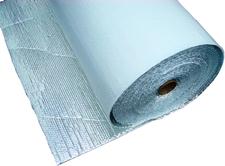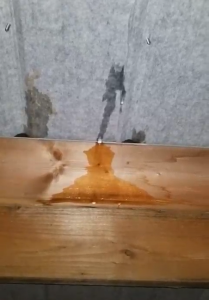There are some days when I feel as if I have become the “Dear Abby” for everyone else’s pole barn problems. So many of these problems could have been easily avoided, and at a relatively low cost, at time of construction.
A reader writes:
“I have a Morton pole barn that really sweats this time of year. With cool nights below freezing and days warming up above freezing it’s like raining in the barn. Roof is metal nailed to 2×4 purlins with a full ridge vent. Usually by noon it dries up but I am worried what this will do the purlins in time. Floor is stone. It is so bad that I would not put a load of seed in the barn without covering. Morton’s fix is to remove the roof and either but their insulation board down and re-install the original sheet metal or replace the roof with new metal that has the insulation fabric bonded to the metal. Either way … expensive. Any suggestions?”
Dear Drip….
This is what is happening – warm moist air from inside of your building is rising. When it contacts the underside of the cooler roof steel, it is condensing. Over time, not only will the purlins develop unsightly water streaks, but there is also the potential for rot. It is very possible for moisture to collect around the shanks of the roof screws (and hopefully they have not used nails) and rust them, causing leaks. Many steel manufacturers will not warranty their products as roofing, unless installed over insulation vapor barrier.
Ventilation alone, is not going to solve the problem. Even a roof only building, will have the same issues.
How to solve from where you are now….
 Least expensive, would be to place insulation vapor barrier on the underside of the roof purlins. In order for this to work, it requires all of the seams to be tight. I’d recommend a product which has tabs with adhesive pull strips, rather than square edges which must be taped. Look at www.buyreflectiveinsulation.com for more ideas.
Least expensive, would be to place insulation vapor barrier on the underside of the roof purlins. In order for this to work, it requires all of the seams to be tight. I’d recommend a product which has tabs with adhesive pull strips, rather than square edges which must be taped. Look at www.buyreflectiveinsulation.com for more ideas.
If you say the roof is nailed on – removal of it and trying to reuse the steel panels is not going to happen.
Spray foam is probably going to prove to be less expensive than a new roof.
Sad to say this….but for probably about two bits per square foot of roof surface adding insulation vapor barrier at time of construction, we wouldn’t be having this conversation.
 So, what exactly would be the keys to a proper installation?
So, what exactly would be the keys to a proper installation?





